During excavations in Reims, archaeologists discovered the remains of a lavish residence from the second century C.E. — though it was inexplicably built in what was then the less-desirable part of town.
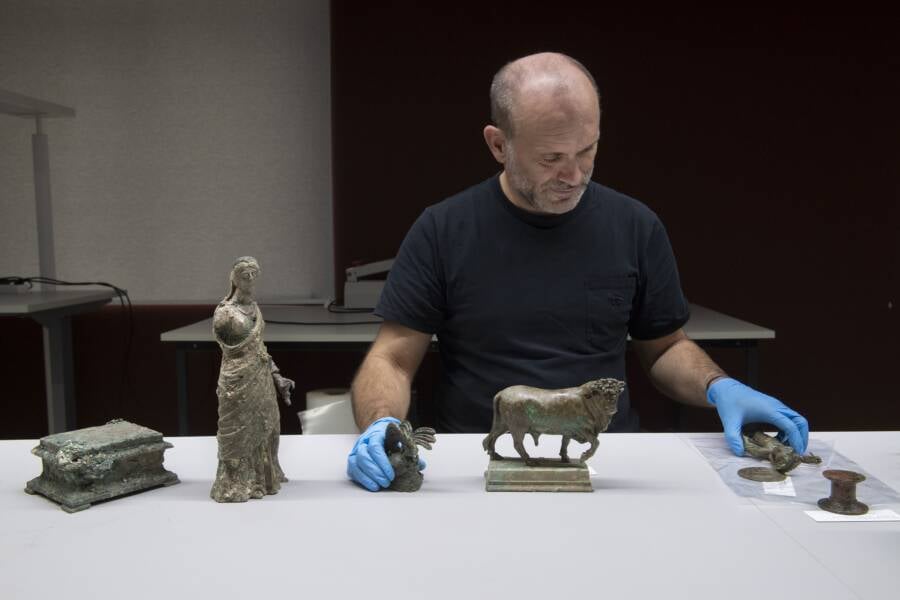
Joël Peyrou/INRAPCurator and restorer Renaud Bernadet cleaning the statuettes found at the Gallo-Roman villa uncovered in Reims, France.
Archaeologists from the French National Institute for Preventative Archaeological Research (INRAP) recently announced the discovery of a luxurious Gallo-Roman villa within the city of Reims.
Inside, researchers discovered a wealth of treasures including three finely crafted bronze statuettes, grand entryway pillars, and frescoes referencing Roman mythology.
The domus dates to the second century C.E., when Reims was known as the Gallo-Roman city of Durocortorum. At the time, it was the second largest city in Roman Gaul — and these new discoveries are shedding light on this ancient city and the lives of some of its people.
The Luxurious Gallo-Roman Villa Unearthed In Reims, France
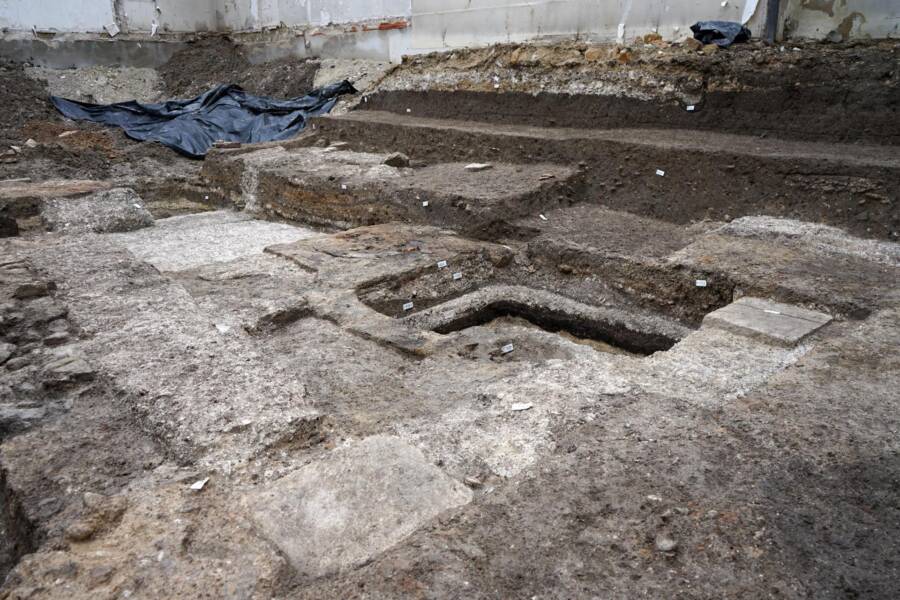
Jean-Jacques Bigot/INRAPThe entrance to the Gallo-Roman villa.
According to an INRAP statement, the ancient city of Durocortorum was a fairly typical Roman urban center of its era. It was comprised of residential blocks that formed a grid around a central forum, which would have been the seat of political and religious influence.
Much of that central forum had been explored and cataloged over the years, but the more distant sections of the ancient city had yet to be so thoroughly excavated — until now.
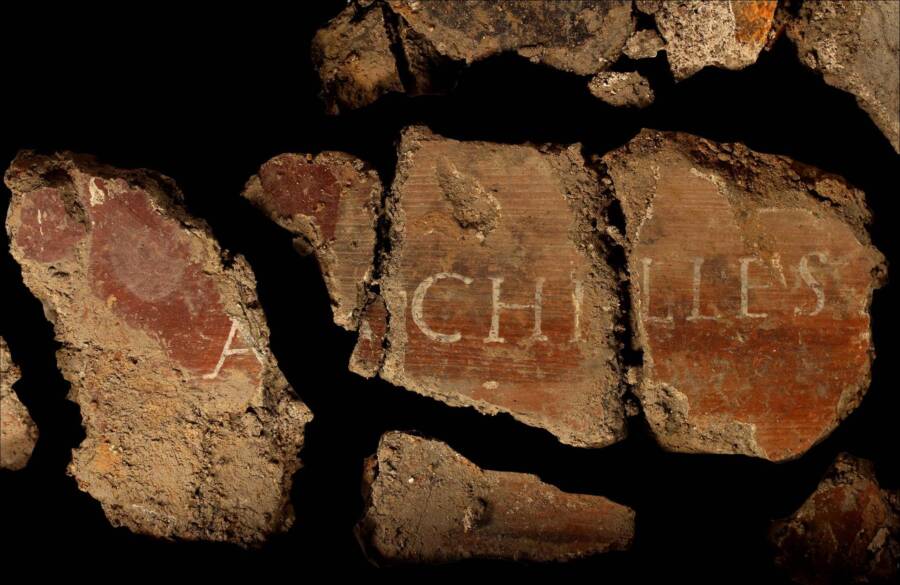
Jean-Jacques Bigot/INRAPFragments of the painted plaster bearing the name of Achilles.
But recently, on the western edge of what was once Durocortorum, archaeologists discovered the remains of a lavish Gallo-Roman villa. Built during the second century C.E., the villa’s street-facing facade was flanked by two large, imposing pillars.
Inside the villa, archaeologists found even more to be excited about.
The interior contained a massive frescoed wall bearing the names of the mythological hero Achilles and the princess Deidamia, daughter of King Lycomedes of Scyros. The fresco recounts a popular myth involving these two.
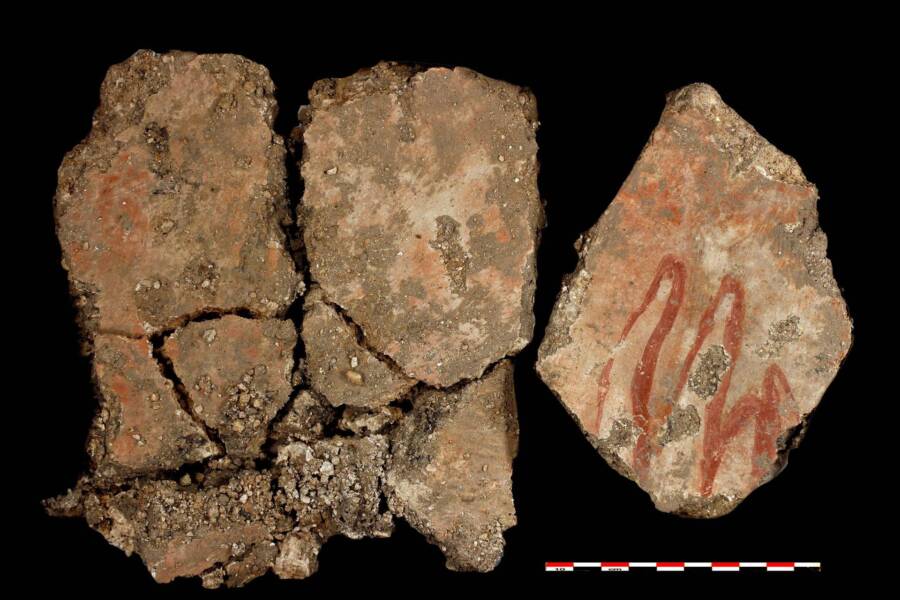
Jean-Jacques Bigot/INRAPA detail of a painted hand on plaster fragments.
According to the tale, Achilles once disguised himself as a woman and hid on the island of Scyros among Lycomedes’ seven daughters as a lady-in-waiting named “Pyrrha.” During his stay, however, he and Deidamia became lovers and had a son named Neoptolemus.
But when Odysseus arrived on the island, he exposed Achilles for who he truly was. As a result, Achilles left the island to fight on the Greek side during the Trojan War.
Per the INRAP statement, this scene was cherished in ancient Rome, yet only three other frescoes depicting it have been uncovered previously — one in Aquileia, one in Pompeii, and one in Rome proper. Its presence in this villa is a testament to the deep fascination with Rome held by elites in the provincial capital of Gaul Belgica.
Archaeologists were equally fascinated by the discovery of three finely decorated bronze statuettes found inside the villa.
Bronze Statuettes Depicting Mars, A Bull, And A Goddess
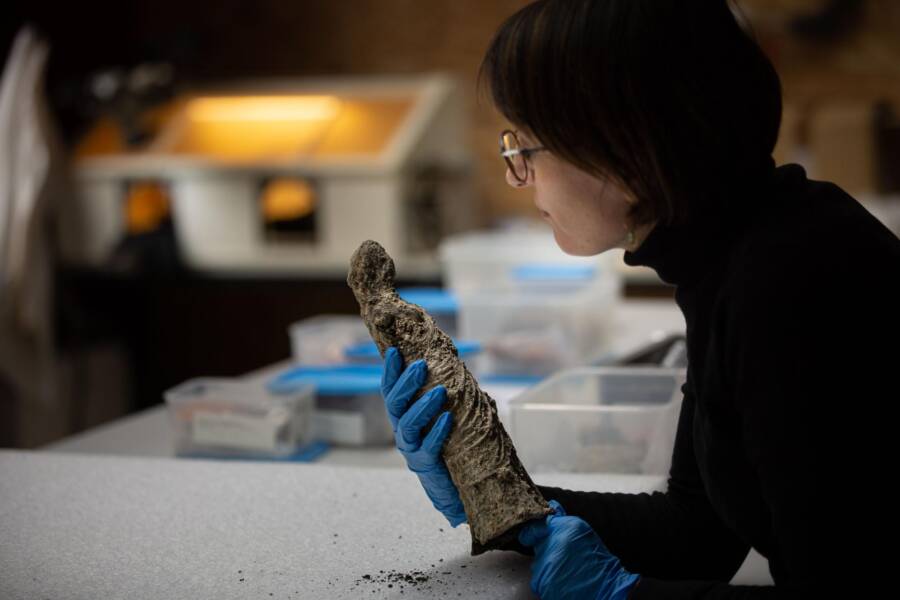
Simon Loiseau/INRAPThe goddess statuette being examined before cleaning.
Found inside the domus were three finely decorated bronze statuettes depicting the god Mars, a bull, and an unidentified goddess. The Mars statuette depicts the god with silver eyes, a Medusa on his armor, and a shield decorated with a relief of the twin brothers Remus and Romulus — for whom Rome is named — along with the she-wolf that raised them.
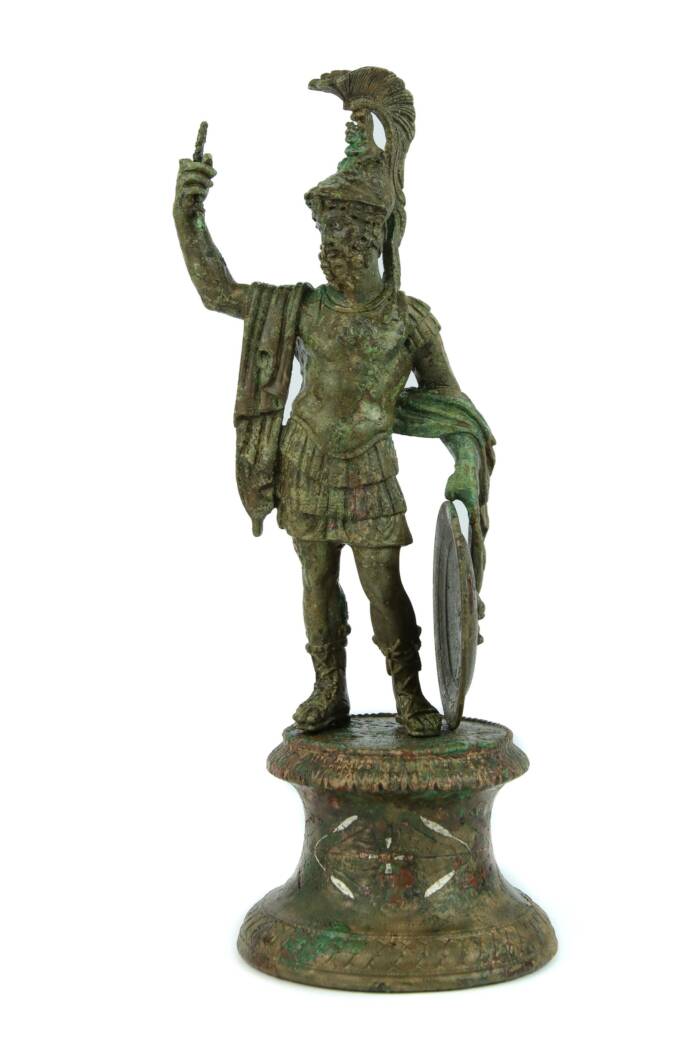
Renaud Bernadet/INRAPFront view of the Mars statuette after cleaning.
The level of detail on the bull statue was equally impressive. Its eyes were also silver, and the sculptor captured minute details such as the wrinkles on the bull’s neck and the curls of his forehead.
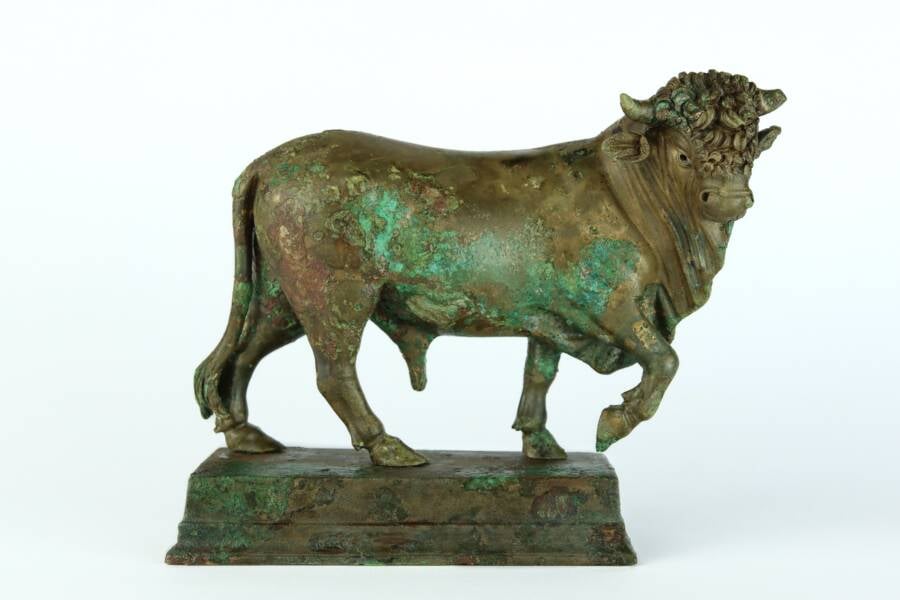
Renaud Bernadet/INRAPThe carefully crafted and detailed bull statuette.
The final statue is of a goddess equipped with the club of Hercules surrounded by a snake, resting on the skin of the Nemean lion.
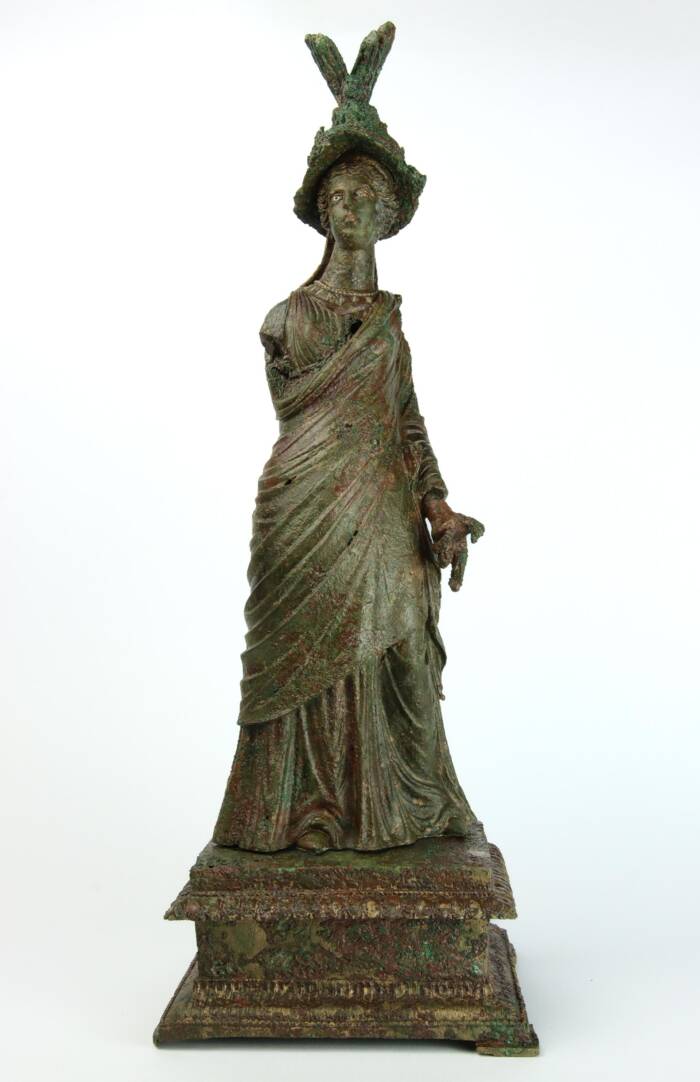
Renaud Bernadet/INRAPThe statuette of the unidentified goddess with her helmet after cleaning.
Though the statuette sustained some damage over the years, marks on its back indicated that it once had wings and a helmet meant to invoke the relief of a sphinx, a face, and a crown of battlements, perhaps representative of a city. So far, researchers have not identified the goddess or the symbolism behind all of these various features.
From their findings, archaeologists determined that the owner of this residence had clearly been of great wealth and that they had a strong attachment to Roman culture. This only raises more questions, though, given the home’s distance from the city’s forum and its presence in the more humid, damp part of town.
Excavations are ongoing as preparations are being made to construct a new residence at the location.
After reading about the discovery of this Gallo-Roman villa and the treasures it held inside, learn all about the gods of the Greek and Roman pantheon. Then, learn the story of why Rome fell.





